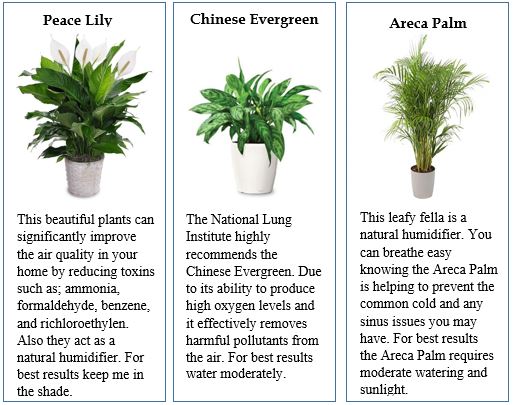As winter continues it is easy to miss the colors of the outdoors. Spruce up your home with an indoor plant and bring some of color back into your life. Not only are indoor plants aesthetically pleasing but they also provide a breath of fresh air. Live plants interact with your body and soul to enhance your quality of life.
A Breath of Fresh Air
As you breathe your body takes in oxygen and releases carbon dioxide. Which the plant absorbs and releases oxygen. This pattern makes plants and people natural partners. By sprucing up the indoors with color you are also increasing your oxygen levels in your home, helping you breathe easy.
Purifies the Air
We spend the majority of our lives indoors, so the quality of your air indoors is essential. Plants are the world’s first air purifier. They naturally remove various toxins from the air and break them down into harmless byproducts. Sources of air pollutants can be found in everyday items such as; fuels, furnishings, and clothing.
Types of Indoor Plants
Written By: Karlie Kudrna



